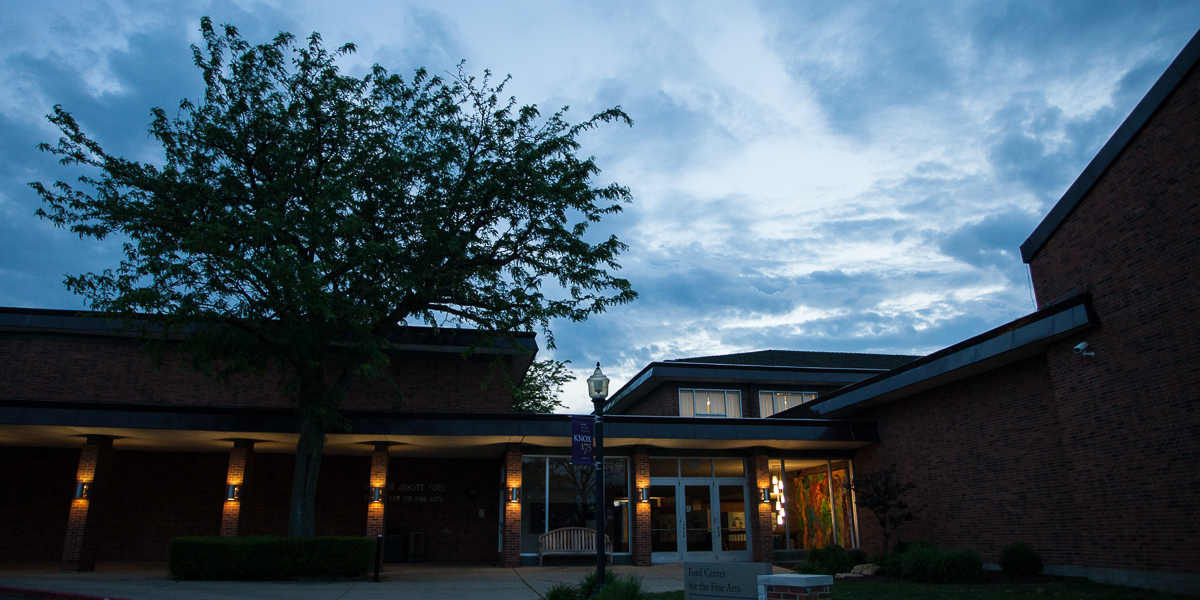

Venture Boldly

Office of Communications
2 East South Street
Galesburg, IL 61401

"Tokyo was our classroom," says professor Michael Schneider, who led a group of 22 Knox students in the Japan Term course on a two-week visit to Japan.
At Knox, the students took classes this fall in Japanese language, Buddhism, and Asian history. Then, from December 1 through December 16, they visited Tokyo, Kyoto, Nara and Hiroshima. The students were accompanied by Schneider, associate professor of history and co-director of the Center for Global Studies; William Young, associate professor of philosophy; Robin Ragan, associate professor of modern languages; and Kaori Furuya, visiting instructor in Japanese.
About half of the students in the class will undertake in-depth projects during an optional seminar, Japan Term II, from January through March 2009.
Below are photos and excerpts from Professor Schneider's Japan Term on-line journal.
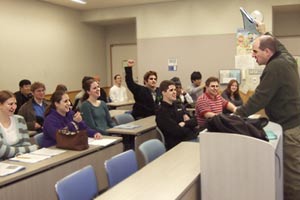 |
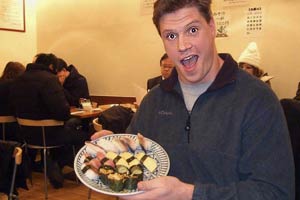 |
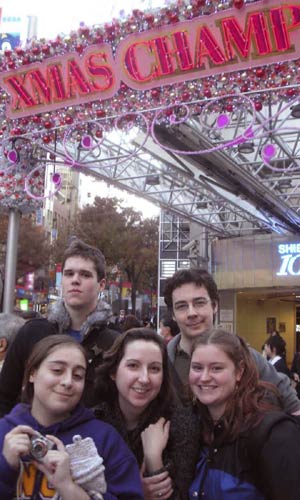 |
Above left, upon arriving in Japan, Prof. Michael Schneider assembles the class in a room at Waseda University to exhort students: "We will use our chopsticks properly!" "There are many adaptations to life in Japan that students must make quickly," Schneider notes in his on-line diary, "such as new breakfasts of rice, fish, and miso (bean paste)... as well as new lunches," like the one held by Tighe Burke, above right. The class was divided into small groups and "sent out across the city in a digital-image scavenger hunt" (i.e., get pictures of...) Schneider writes. The assignment "builds confidence in navigating the city and using Japanese language." One group, left, finds the Shibuya shopping district; another, below, the "Gate of Thunder" in the "Lower City" of old Edo.
|
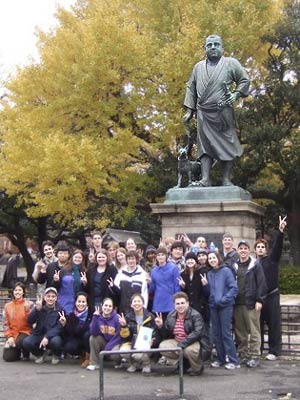 |
At left, in the middle of a working class neighborhood, Schneider writes, the class gathers at a statue that "commemorates the revolutionary Saigo Takamori, the inspiration for the wildly inaccurate Tom Cruise flick The Last Samurai." File under fun facts to know and tell: According to Schneider, "the Peace Sign is obligatory in photos among Japanese teenagers." Below, in an ancient Japanese capital, Nara, the world's largest wooden structure features a massive central pillar of which, Schneider writes, "legend says that those who can pass through the hole at the base of the pillar cross into enlightenment... [Karin Gordon's] enlightenment is assured..."
|
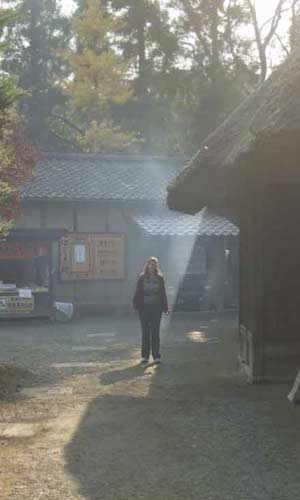 |
In addition to a population of 12-million, where "one can't even cast a shadow without hitting someone," Schneider writes that Tokyo features a reconsitituted rural village (left) that was located "out of sight of every modern building." Below, a temple gate in Kyoto.
|
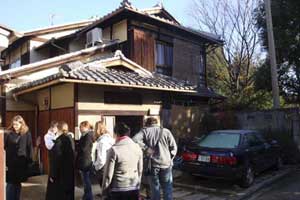 |
Two days in Kyoto, Schneider writes, "we stayed in a traditional Japanese house (at left) that lacked central heating and modern insulation. In the evenings we warded off the chill with a long soak in the local hot springs bath." Below, adjacent to Hiroshima, the sea gate on the island of Miyajima, sacred in Shinto religious practice for over 1,500 years. |
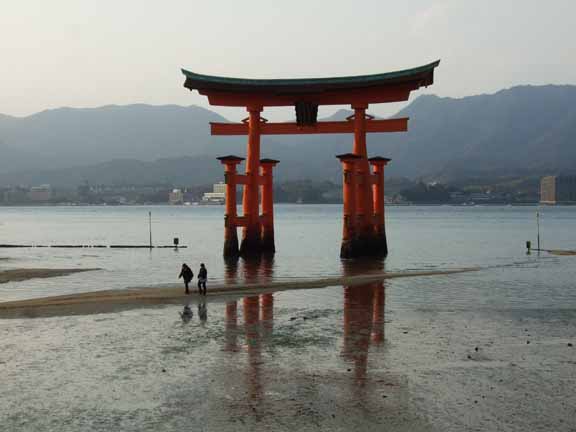 |
|
Published on December 22, 2008